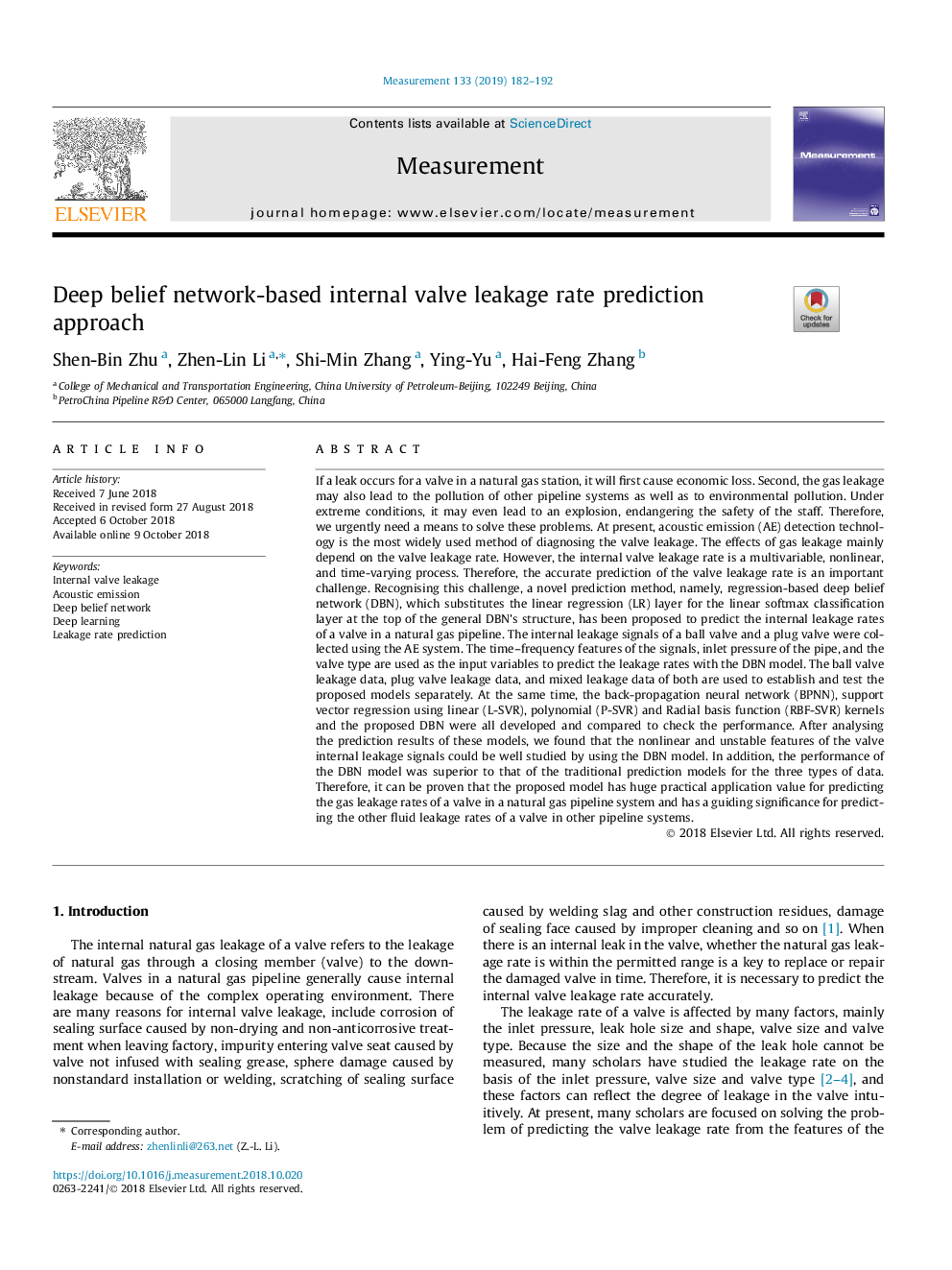| کد مقاله | کد نشریه | سال انتشار | مقاله انگلیسی | نسخه تمام متن |
|---|---|---|---|---|
| 11012211 | 1800897 | 2019 | 11 صفحه PDF | دانلود رایگان |
عنوان انگلیسی مقاله ISI
Deep belief network-based internal valve leakage rate prediction approach
ترجمه فارسی عنوان
رویکرد پیش بینی میزان نشت دریچه داخلی شبکه مبتنی بر شبکه عمیق
دانلود مقاله + سفارش ترجمه
دانلود مقاله ISI انگلیسی
رایگان برای ایرانیان
کلمات کلیدی
نشت داخلی دریچه، انتشار آکوستیک، شبکه اعتقادی درونی، یادگیری عمیق، پیش بینی نرخ نشت،
موضوعات مرتبط
مهندسی و علوم پایه
سایر رشته های مهندسی
کنترل و سیستم های مهندسی
چکیده انگلیسی
If a leak occurs for a valve in a natural gas station, it will first cause economic loss. Second, the gas leakage may also lead to the pollution of other pipeline systems as well as to environmental pollution. Under extreme conditions, it may even lead to an explosion, endangering the safety of the staff. Therefore, we urgently need a means to solve these problems. At present, acoustic emission (AE) detection technology is the most widely used method of diagnosing the valve leakage. The effects of gas leakage mainly depend on the valve leakage rate. However, the internal valve leakage rate is a multivariable, nonlinear, and time-varying process. Therefore, the accurate prediction of the valve leakage rate is an important challenge. Recognising this challenge, a novel prediction method, namely, regression-based deep belief network (DBN), which substitutes the linear regression (LR) layer for the linear softmax classification layer at the top of the general DBN's structure, has been proposed to predict the internal leakage rates of a valve in a natural gas pipeline. The internal leakage signals of a ball valve and a plug valve were collected using the AE system. The time-frequency features of the signals, inlet pressure of the pipe, and the valve type are used as the input variables to predict the leakage rates with the DBN model. The ball valve leakage data, plug valve leakage data, and mixed leakage data of both are used to establish and test the proposed models separately. At the same time, the back-propagation neural network (BPNN), support vector regression using linear (L-SVR), polynomial (P-SVR) and Radial basis function (RBF-SVR) kernels and the proposed DBN were all developed and compared to check the performance. After analysing the prediction results of these models, we found that the nonlinear and unstable features of the valve internal leakage signals could be well studied by using the DBN model. In addition, the performance of the DBN model was superior to that of the traditional prediction models for the three types of data. Therefore, it can be proven that the proposed model has huge practical application value for predicting the gas leakage rates of a valve in a natural gas pipeline system and has a guiding significance for predicting the other fluid leakage rates of a valve in other pipeline systems.
ناشر
Database: Elsevier - ScienceDirect (ساینس دایرکت)
Journal: Measurement - Volume 133, February 2019, Pages 182-192
Journal: Measurement - Volume 133, February 2019, Pages 182-192
نویسندگان
Shen-Bin Zhu, Zhen-Lin Li, Shi-Min Zhang, Ying-Yu Ying-Yu, Hai-Feng Zhang,
